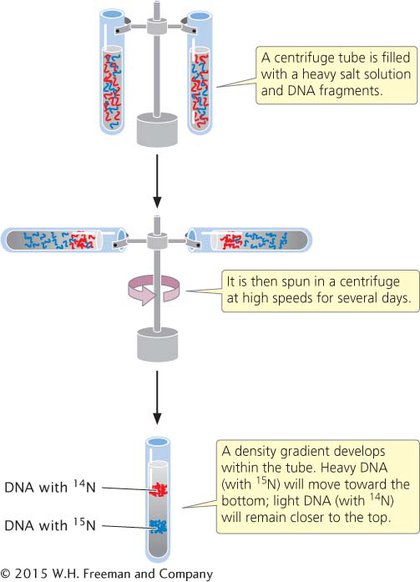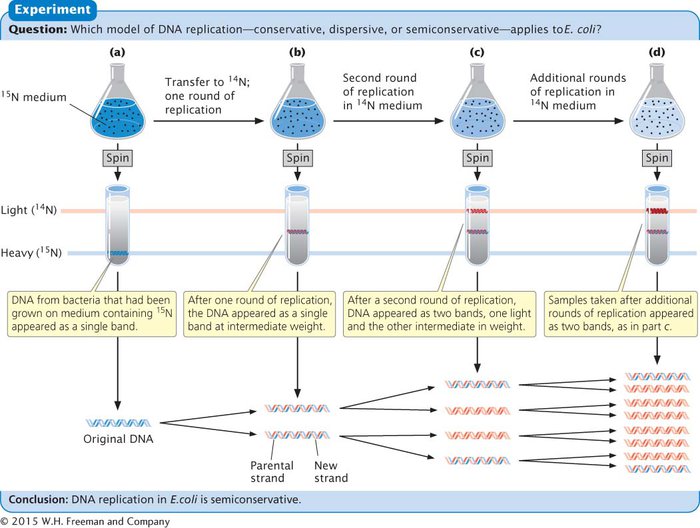Meselson and Stahl’s Experiment
To determine which of the three models of replication applied to E. coli cells, Matthew Meselson and Franklin Stahl needed a way to distinguish old and new DNA. They accomplished this by using two isotopes of nitrogen, 14N (the common form) and 15N (a rare, heavy form). Meselson and Stahl grew a culture of E. coli in a medium that contained 15N as the sole nitrogen source; after many generations, all the E. coli cells had 15N incorporated into all the purine and pyrimidine bases of their DNA (see Figure 8.8). Meselson and Stahl took a sample of these bacteria, switched the rest of the bacteria to a medium that contained only 14N, and then took additional samples of bacteria over the next few cellular generations. In each sample, the bacterial DNA that was synthesized before the change in medium contained 15N and was relatively heavy, whereas any DNA synthesized after the switch contained 14N and was relatively light.

Meselson and Stahl distinguished between the heavy 15N-
236
Meselson and Stahl found that DNA from bacteria grown only on medium containing 15N produced a single band at the position expected of DNA containing only 15N (Figure 9.3a). DNA from bacteria transferred to the medium with 14N and allowed one round of replication also produced a single band, but at a position intermediate between that expected of DNA containing only 15N and that expected of DNA containing only 14N (Figure 9.3b). This result is inconsistent with the conservative replication model, which predicts one heavy band (the original DNA molecules) and one light band (the new DNA molecules). A single band of intermediate density is predicted by both the semiconservative and the dispersive models.

To distinguish between these two models, Meselson and Stahl grew the bacteria in medium containing 14N for a second generation. After a second round of replication in medium with 14N, two bands of equal intensity appeared, one in the intermediate position and the other at the position expected of DNA containing only 14N (Figure 9.3c). All samples taken after additional rounds of replication produced two bands, and the band representing light DNA became progressively stronger (Figure 9.3d). Meselson and Stahl’s results were exactly as expected for semiconservative replication and were incompatible with those predicated for both conservative and dispersive replication.  TRY PROBLEM 18
TRY PROBLEM 18
237
CONCEPTS
Meselson and Stahl convincingly demonstrated that replication in E. coli is semiconservative: each DNA strand serves as a template for the synthesis of a new DNA molecule.
 CONCEPT CHECK 1
CONCEPT CHECK 1
How many bands of DNA would be expected in Meselson and Stahl’s experiment after two rounds of conservative replication?
Two bands